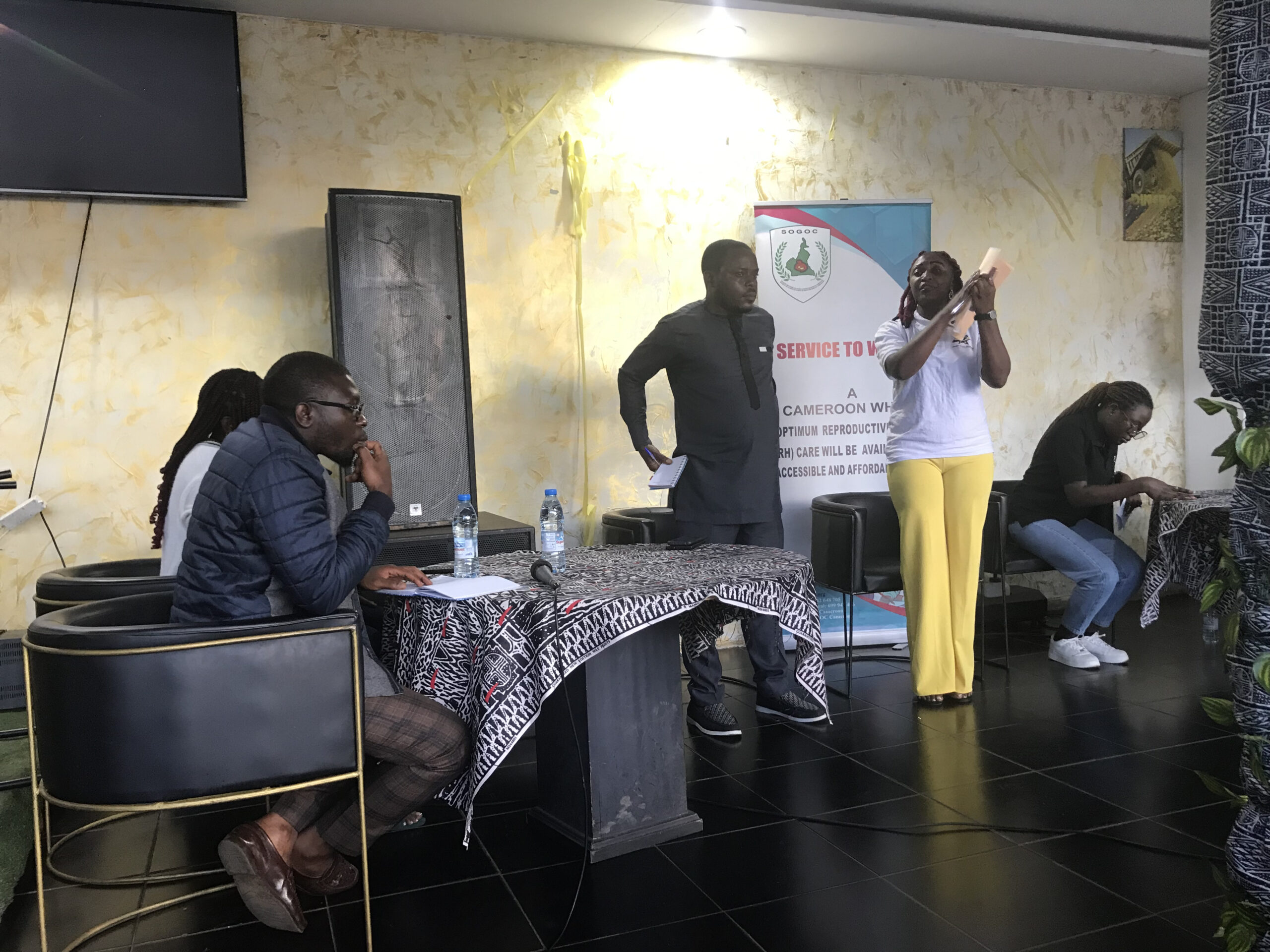By Leocadia Bongben
Jennifer Akoh, MoonGirl (stage name), through the spoken word, creatively, and in a melodic voice, articulated the need for safe abortion for those eligible women whose health is at risk, and pregnancies from rape. She told the story of Anita, who was raped, and how society treated her worse than the rapist, stigmatizing her, and how she lost her life trying to get a backstreet abortion. Like Anita, many young girls and women find themselves in such a spiral of silence and end up six feet deep or with complications.
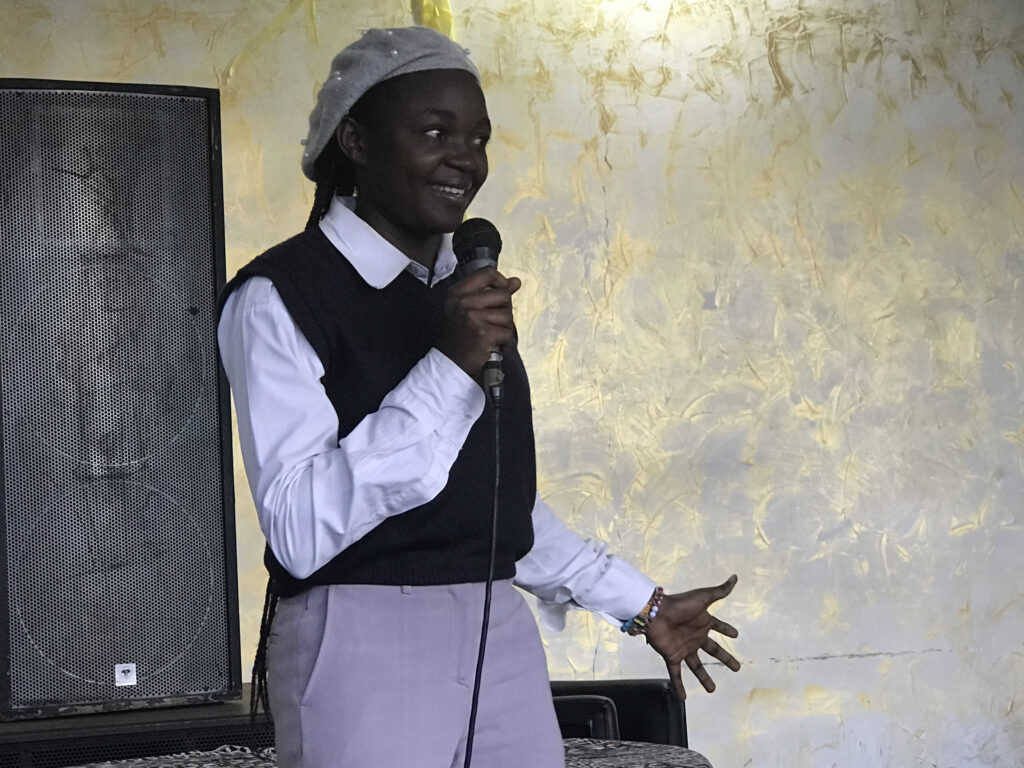
The British parliament-style debate also echoed the need for safe abortion, with a supporting government motion by university students.
This is how the Society of Gynecologists and Obstetricians of Cameroon, SOGOC, marked the International Safe Abortion Day, with an Arts Evening under the theme: ‘Safe abortion is a Life-saving Healthcare.
Streamlining the message, Rita Yenjong, Programme Manager of “Access to Safe Abortion Care’, ACAC project, outlined the procedure to follow in a rape case. “The victim should go to the hospital for a medical report, then the police report, the court for attestation, and then back to the hospital for a safe abortion.” However, the procedure is long and draining, such that the victim may be six months into the pregnancy or even give birth at the end of the procedure. “We at SOGOC are saying the procedure is cumbersome, and we are advocating for the time to be reduced to 72 hours,” Rita Yenjong adds.
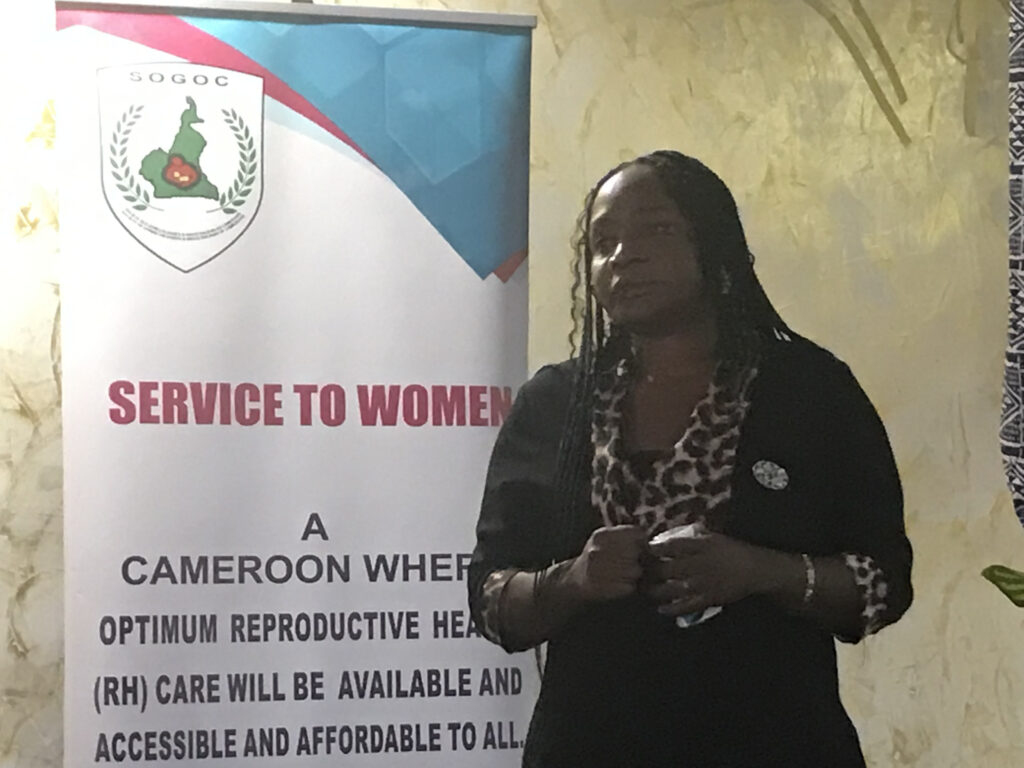
According to FIGO, 45% of all abortions performed worldwide are unsafe due to a lack of access to safe abortion practices. Unsafe abortion is still a major public health issue, contributing to up to 13% of maternal deaths globally, or about 47,000 deaths, and leaving hundreds of thousands of survivors with chronic agony and infertility. Ninety-seven percent of these unsafe abortions occur in Latin America, South and Central Asia, and sub-Saharan Africa.
The World Health Organisation estimates that at-risk abortions account for 14% of maternal deaths in Cameroon. This figure translates to hundreds of avoidable deaths each year.
Dr Anny Ngassam, SOGOC, deputy secretary representing the president, hailed the youths for their implication in the safe abortion advocacy. Going by her, adolescents are part of the 14 percent of maternal deaths, as a result of their exposure to unwanted pregnancies, and because of their silence, and fear of judgment, they turn to clandestine abortions. She maintained that even when they come back with complications from abortion, they do not know what to do. “We have post abortion care services,” Ngassam revealed, stressing that the fear of being judged and shame stops girls from coming up to say they are bleeding as a result of abortion. “Our cry is to reduce the mortality rate in Cameroon,” which is pegged at 406 per 100000 live births. Ngassam reiterated that SOGOC works within the ambit of the law.
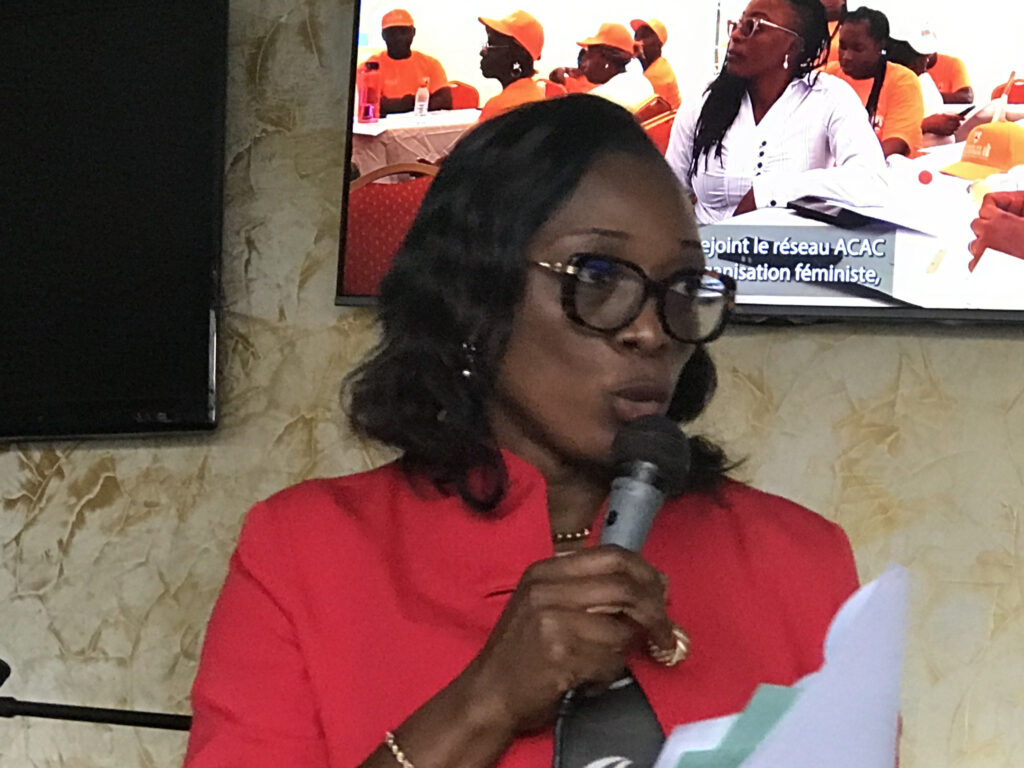
Abortion is prohibited in Cameroon; however, Article 339, paragraphs 1 and 2 of the Penal Code, states that abortion is allowed if the mother’s life is at risk and in case of rape. Cameroon signed the Protocol to the African Charter on Human and Peoples’ Rights on the Rights of Women in Africa in 2005 and ratified it in 2009. Article 14, paragraph 2 known as the Maputo Protocol, instructs states to respect women’s sexual and reproductive rights. The implementation of the protocol in Cameroon remains elusive despite advocacy from civil society organizations.
Ngassam maintains that the International Safe Abortion Day a reminder that safe abortion is part of the complete reproductive healthcare.. “In Cameroon, we know that abortion laws are still very restrictive, forcing teenagers and women to resort to clandestine abortions, thus exposing their health, fertility, and, unfortunately, sometimes their lives. It is not only urgent, but vital, that safe abortion is part of the complete reproductive health care,” Ngassam stressed.
